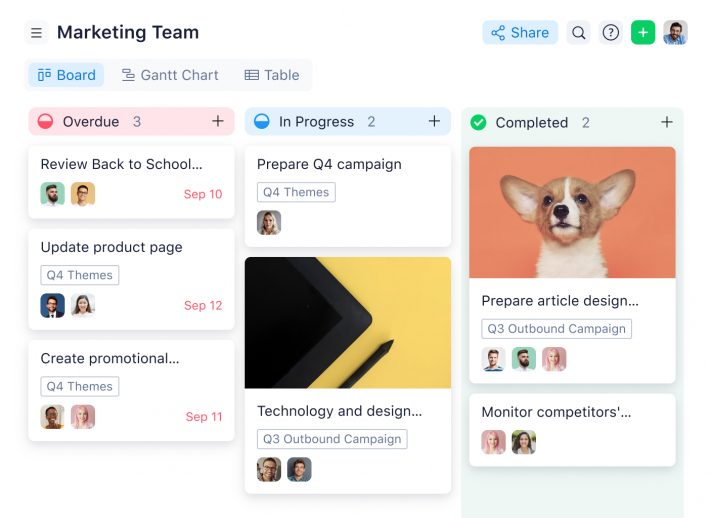Key takeaways:
- Why are department goals important? Clear goals align efforts, enhance communication, and boost productivity within teams.
- What is the SMART framework? SMART stands for Specific, Measurable, Attainable, Relevant, and Time-Bound, ensuring effective goal-setting.
- How do department goals link to company vision? Aligning department goals with the overall vision instills purpose and direction across teams.
- What role do departmental goals play in employee satisfaction? Clear goals reduce stress and improve work-life balance, fostering higher employee engagement.
- Can you give examples of effective department goals? Sales, HR, and IT can set goals to improve revenue, employee retention, and system uptime, respectively.
In order for companies to achieve long-term success, it is crucial to establish thoughtful and effective department goals. But what does it take to create department goals that truly set the benchmark for success? In this article, we will explore the importance of department goals, how to set SMART goals, and provide specific examples for various industries.
Ensure your department goals are designed for long-term success by implementing a powerful tool like Wrike. Sequence, organize, and track your objectives effortlessly with a 14-day free trial of Wrike’s advanced work management tools.
Understanding the Importance of Department Goals
When each department has clear goals, it aligns its efforts and resources toward the same outcome. Since each team has a specific target to aim for, they know what to prioritize. This leads to better communication and collaboration among employees, higher productivity and engagement, and a focus on continuous improvement.
Aligning Department Goals with Company Vision
Department goals should always be aligned with the company’s overall vision, as everybody should be working towards the same objectives. When creating goals, it’s important to consider how they will contribute to the company’s long-term vision and mission. This not only helps to keep the department on track but also provides a sense of direction and purpose for every employee.
If a company’s goal is to become a leader in sustainable practices, each department’s goals should reflect this vision. The marketing department may set a goal to promote the company’s sustainable initiatives, while the operations department may set a goal to reduce waste and implement energy-efficient practices.
Enhancing Employee Engagement and Satisfaction
Department goals also have a direct impact on employee satisfaction and engagement. Additionally, having clear goals reduces employee stress, which can lead to a better work-life balance.
Driving Continuous Improvement and Innovation
Setting department goals that focus on continuous improvement and innovation is crucial for keeping pace with the ever-changing business landscape. Departments can push themselves to go beyond their current capabilities and continuously improve, since there is potential for implementing new ideas and approaches that further drive the company forward.
A sales department may set a goal to increase sales by 10% in the next quarter. To achieve this goal, they must think outside the box. Various solutions would include exploring new markets, developing new products, or improving their sales techniques.
Marketing teams can set a goal to improve project efficiency more easily through the use of a project management tool with multiple views like we offer with Wrike - when everything is in clear view, meeting and exceeding goals becomes far easier.

Setting SMART Department Goals
To create effective department goals and have a quantifiable way to measure success, it’s important to follow the SMART framework (Specific, Measurable, Attainable, Relevant and Realistic, and Time-Bound).
Specificity in Department Goals
Department goals should be specific and well-defined. This means outlining exactly what the department will achieve and how they plan to achieve it. A specific goal could be to “Increase sales revenue by 20% in Q3 by launching a new marketing campaign.” This provides a clear direction for the entire department.
Measurable Outcomes
Goals should be measurable to track progress and success. This translates to creating metrics such as tracking website traffic or monitoring sales numbers.
Measuring outcomes also helps to identify areas of improvement. By regularly monitoring progress toward the goal, adjustments can be made to keep the department on track toward achieving the goal.
Attainable Objectives
Goals should be challenging but also attainable. Pause to evaluate the department’s resources and capabilities when setting the goal. An unattainable goal can lead to a lack of motivation and a decrease in productivity.
However, keep the department’s capacity for growth in mind. By setting goals that challenge the department’s capabilities, growth can be achieved while ensuring that the goals are still within reach.
Relevant and Realistic Targets
Department goals should be relevant and realistic to the company’s overall vision and mission. Using the given timeframe and available resources, align goals with the department’s core responsibilities.
Time-Bound Goals
Goals should have a clear timeframe and deadline. This keeps the department focused and on track toward the target when everyone is working on their tasks. It also establishes a culture of accountability, as you can conduct progress monitoring through regular check-ins and adjustments.
Examples of Goals for Various Industries
Every department in an organization has its own set of SMART goals and objectives that are aligned with the overall business strategy. Here are some examples for various industries:
Sales and Marketing Goals
The sales and marketing department is responsible for generating revenue and increasing brand awareness. To achieve these goals, they need to concentrate on acquiring new customers and retaining existing ones. One of the best ways to do this is by launching a new digital marketing campaign targeted at the ideal customer persona. This can help increase the number of leads generated by 50% in Q2. Additionally, the team can work on improving customer engagement by creating personalized content and offering promotions that align with their interests. This serves as an opportunity to increase customer loyalty and retention rates.
Human Resources Goals
The human resources department is tasked with managing the organization’s most valuable asset - its employees. To do so, they need to focus on improving employee engagement and retention rates. Implementing a new wellness program and regular check-ins with managers is a great strategy to utilize, as this can increase employee satisfaction scores by 10% by Q4. The team can also work to streamline hiring processes by using technology solutions such as applicant tracking systems and video interviews. This can help reduce the time-to-hire and ensure that the organization hires the best talent.
Finance and Accounting Goals
The finance and accounting department must manage the organization’s financial resources. To accomplish this, they need to work on reducing costs, improving cash flow, and increasing profitability. Renegotiating vendor contracts and implementing more efficient billing processes will increase cash flow by 25% in Q3. Use data analytics to identify areas where the organization may reduce costs and increase profitability in the long run.
Information Technology Goals
The information technology department is responsible for managing the organization’s technology infrastructure. To achieve this, they need to focus on improving system uptime, increasing cybersecurity measures, and developing new technology solutions. One of the best ways to do this is by implementing regular system backups and a preventative maintenance plan. This can help reduce system downtime by 50% in Q2. The team can improve overall efficiency and output by developing new technology solutions, such as mobile applications and cloud-based systems.
Operations and Supply Chain Goals
The operations and supply chain department must know how to manage the organization’s supply chain and ensure that products are delivered on time and at the right quality. To accomplish this, they need to improve supply chain efficiency, reduce costs, and enhance product quality. By implementing a new inventory management system and improving communication with suppliers, lead time could be reduced by 20% in Q3. Additionally, the team can work on improving product quality by using data analytics to identify areas where the organization can make improvements. This ensures that the organization delivers products that meet customer expectations.
Conclusion
Setting benchmark department goals is crucial for the success of any company. By aligning department goals with the company’s overall vision, setting SMART goals, and continuously monitoring progress, departments can contribute to the organization’s success and drive long-term growth.
By using the department goals examples provided for various industries, companies can begin to create objectives that are specific, measurable, attainable, relevant and realistic, and time-bound. A recipe for long-term success, organizations will see the fruits of their labor in the form of increased employee engagement and satisfaction and greater innovation.
Set your department up for long-term success with effective goal-setting powered by Wrike’s advanced work management tools. Start your free trial today and unlock better collaboration, strategic planning, and measurable results.
Note: This article was created with the assistance of an AI engine. It has been reviewed and revised by our team of experts to ensure accuracy and quality.
Power the Modern, Agile Enterprise
Crush your goals and keep moving forward with Wrike’s work management platform.




